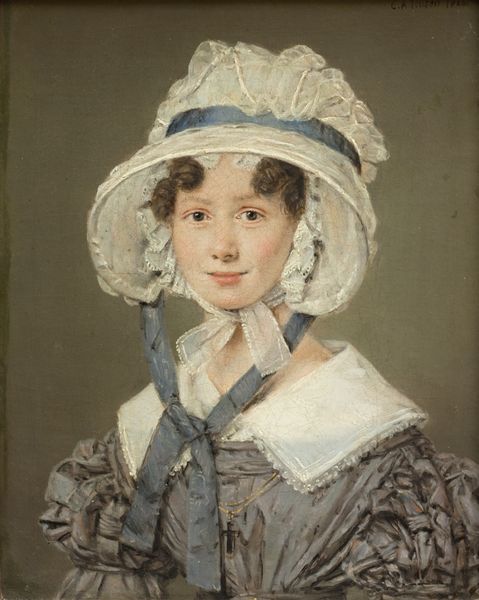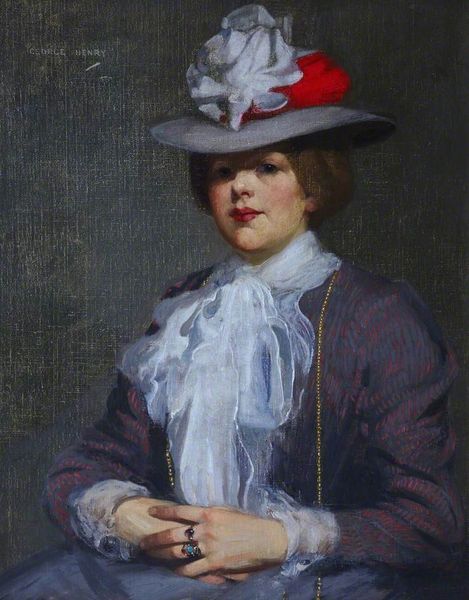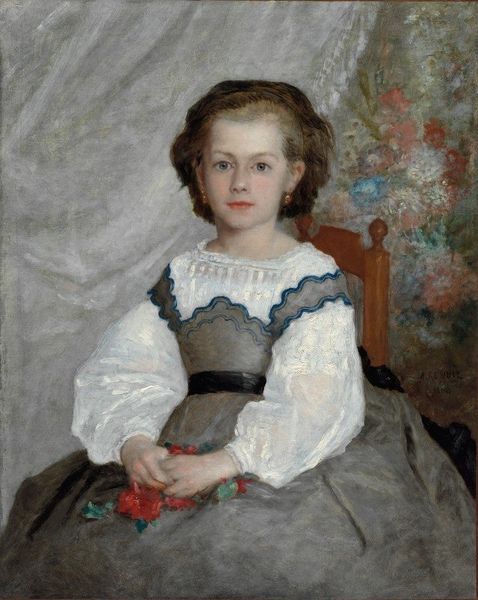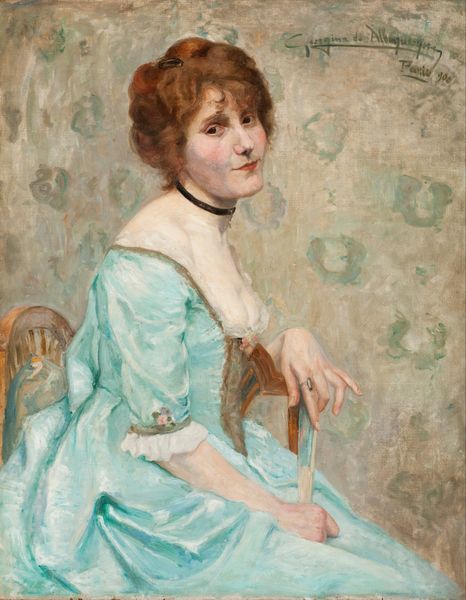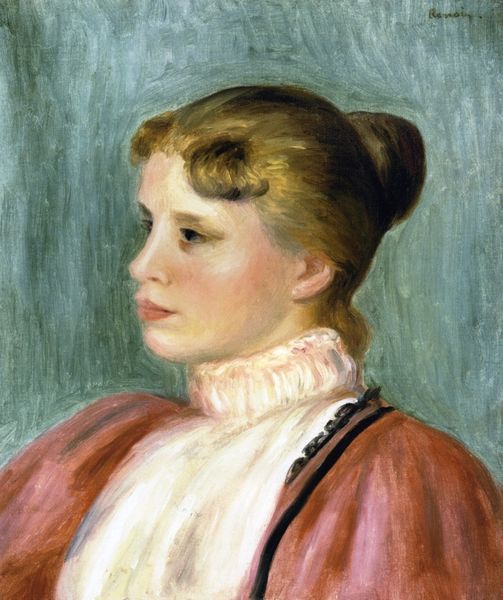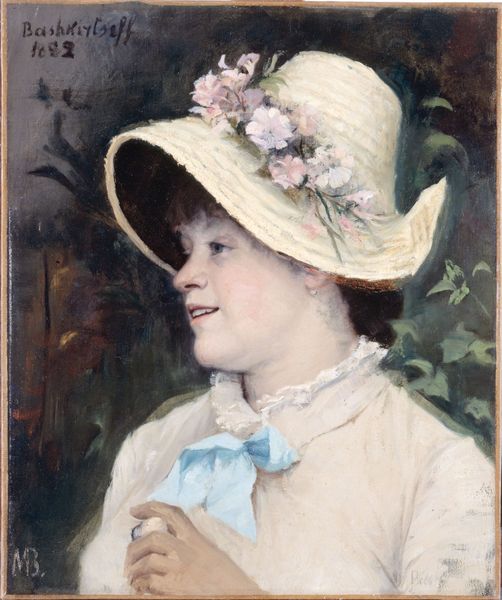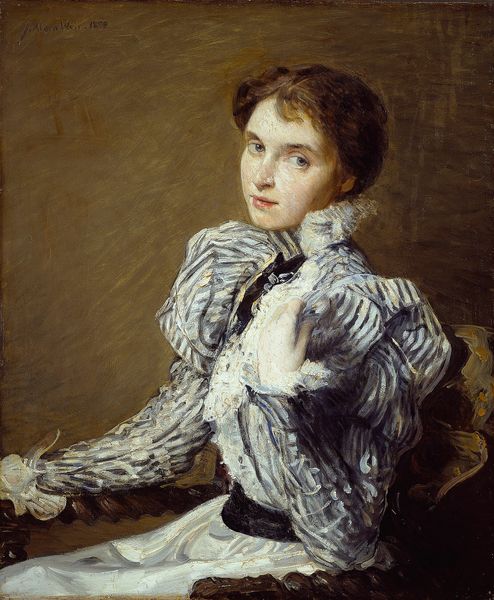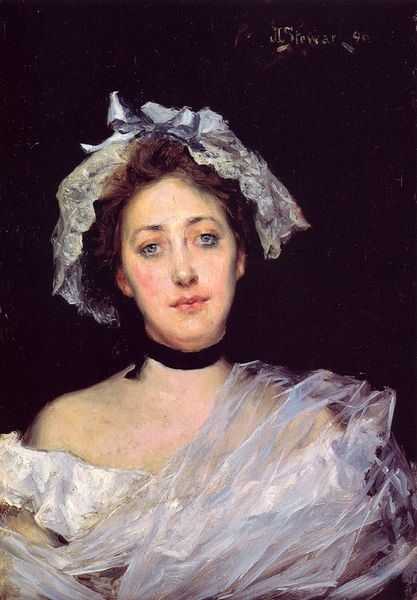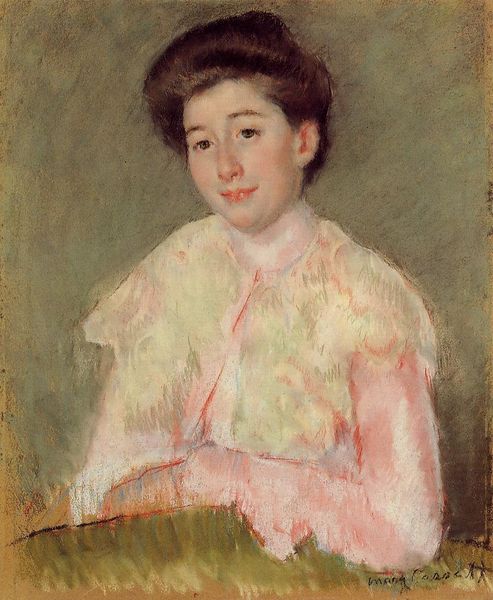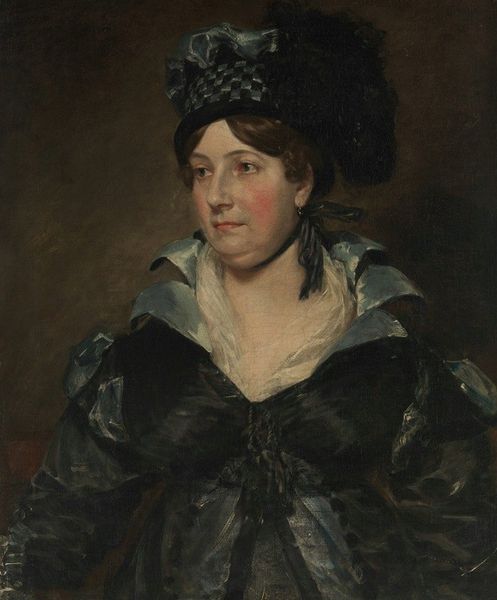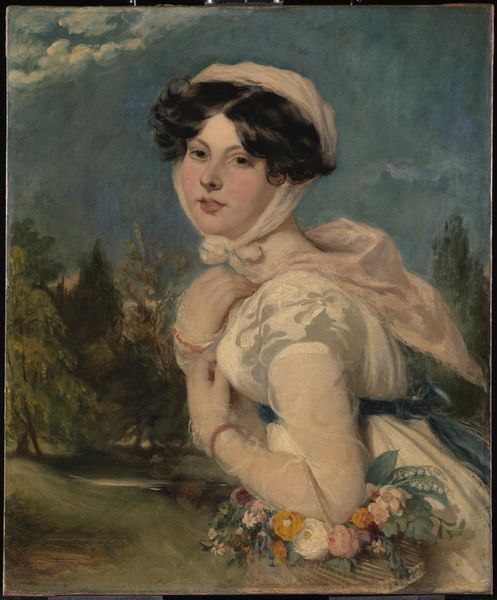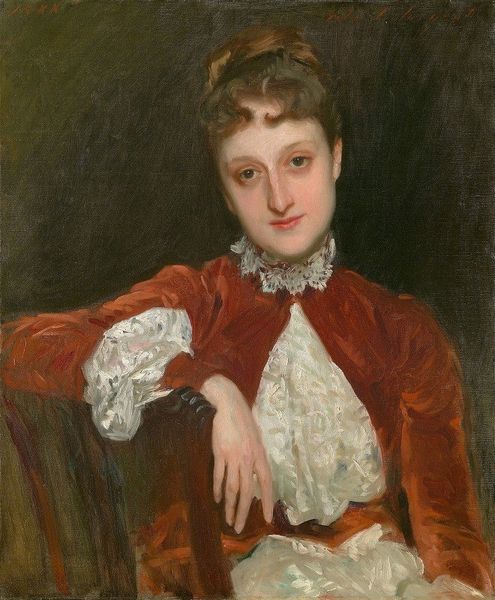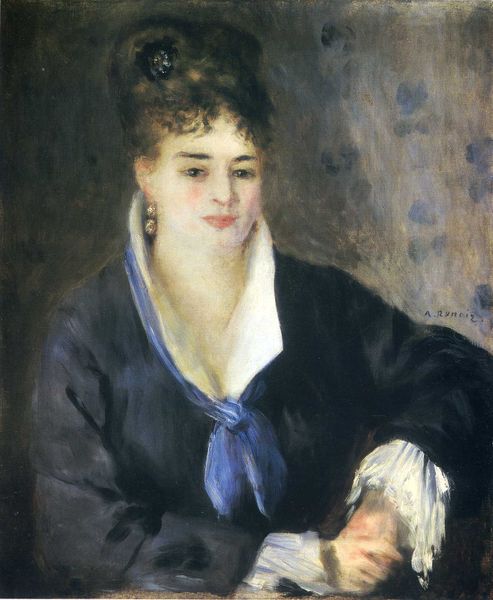
painting, oil-paint
#
portrait
#
painting
#
impressionism
#
oil-paint
#
oil painting
#
genre-painting
Dimensions: 22 1/16 × 18 5/8 in. (56.2 × 47.4 cm)
Copyright: Public Domain
Editor: So, we have here Eva Gonzales' "Girl with Cherries" from around 1870, an oil painting at the Art Institute of Chicago. I'm really struck by how the stark contrast between the girl's striped dress and the dark background makes her pop, almost as if she’s on a stage. What can you tell me about this painting? Curator: It's a fascinating piece to examine through the lens of its time. Considering the societal expectations placed on women artists like Gonzales in 19th-century Paris, we need to ask: how did institutions—like the Salon—both support and constrain female painters? This "Girl with Cherries" offers an interesting point of departure, wouldn’t you agree? Editor: Absolutely. I guess what seems like a simple portrait then, wasn't so simple at all. Her choice of subject... I mean, it’s a genre scene, but could she have used that, that everyday-ness, to actually push some boundaries? Curator: Precisely. Look at how Gonzales positions her model. The slightly averted gaze, the knife in hand, the cherries... Are these simple, innocuous objects, or are they subtle challenges to the prevailing notions of femininity? We see this around that time where Impressionist painters begin depicting scenes of modern life, not always flattering or idealized portraits. Gonzales uses a subdued palette. Is it just her style, or is she reacting to some societal expectations about women, about what art "should" look like? Editor: I never thought about that connection to social critique before. So, she's subtly inserting herself into a dialogue through what might seem, on the surface, a straightforward image? Curator: Indeed. And thinking critically about that dynamic--between artist, subject, and viewer--gives us a much richer understanding of her art and the public role art played in those times. Editor: Wow. I initially thought this was a sweet portrait, but now I see a lot more complexity, about the position of women painters at the time. Curator: And that shift in perspective, that's what makes engaging with art history so rewarding. Isn't it?
Comments
No comments
Be the first to comment and join the conversation on the ultimate creative platform.
